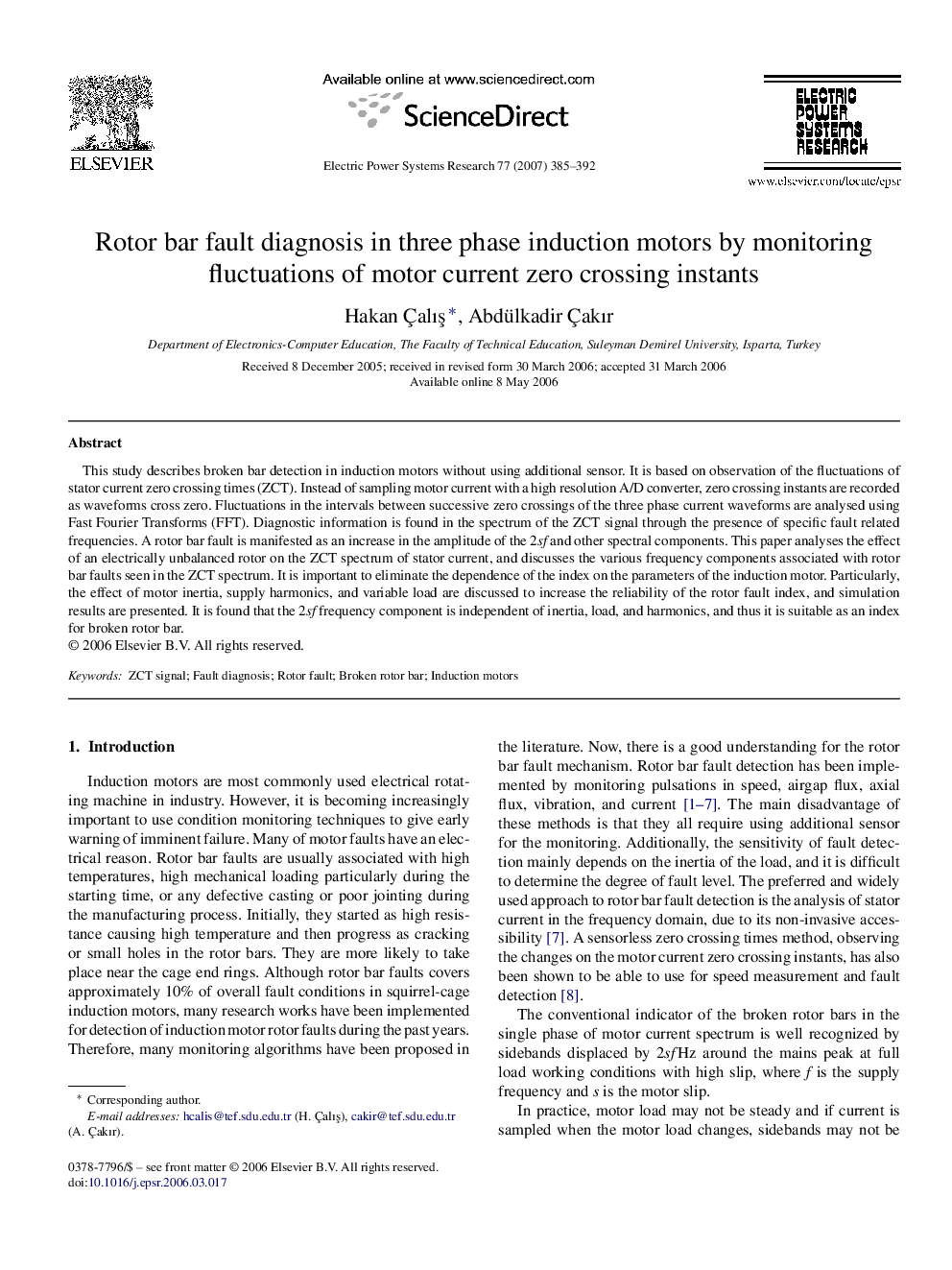| Article ID | Journal | Published Year | Pages | File Type |
|---|---|---|---|---|
| 705724 | Electric Power Systems Research | 2007 | 8 Pages |
This study describes broken bar detection in induction motors without using additional sensor. It is based on observation of the fluctuations of stator current zero crossing times (ZCT). Instead of sampling motor current with a high resolution A/D converter, zero crossing instants are recorded as waveforms cross zero. Fluctuations in the intervals between successive zero crossings of the three phase current waveforms are analysed using Fast Fourier Transforms (FFT). Diagnostic information is found in the spectrum of the ZCT signal through the presence of specific fault related frequencies. A rotor bar fault is manifested as an increase in the amplitude of the 2sf and other spectral components. This paper analyses the effect of an electrically unbalanced rotor on the ZCT spectrum of stator current, and discusses the various frequency components associated with rotor bar faults seen in the ZCT spectrum. It is important to eliminate the dependence of the index on the parameters of the induction motor. Particularly, the effect of motor inertia, supply harmonics, and variable load are discussed to increase the reliability of the rotor fault index, and simulation results are presented. It is found that the 2sf frequency component is independent of inertia, load, and harmonics, and thus it is suitable as an index for broken rotor bar.
